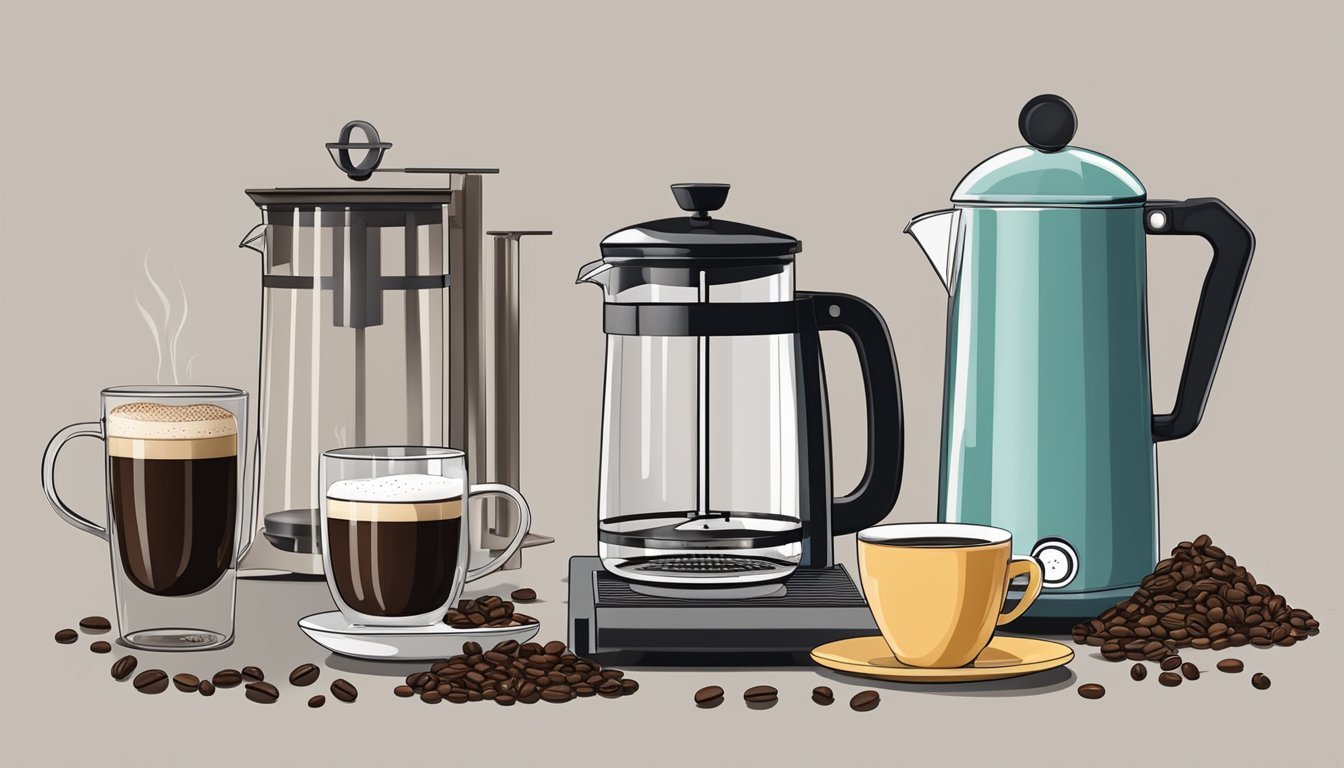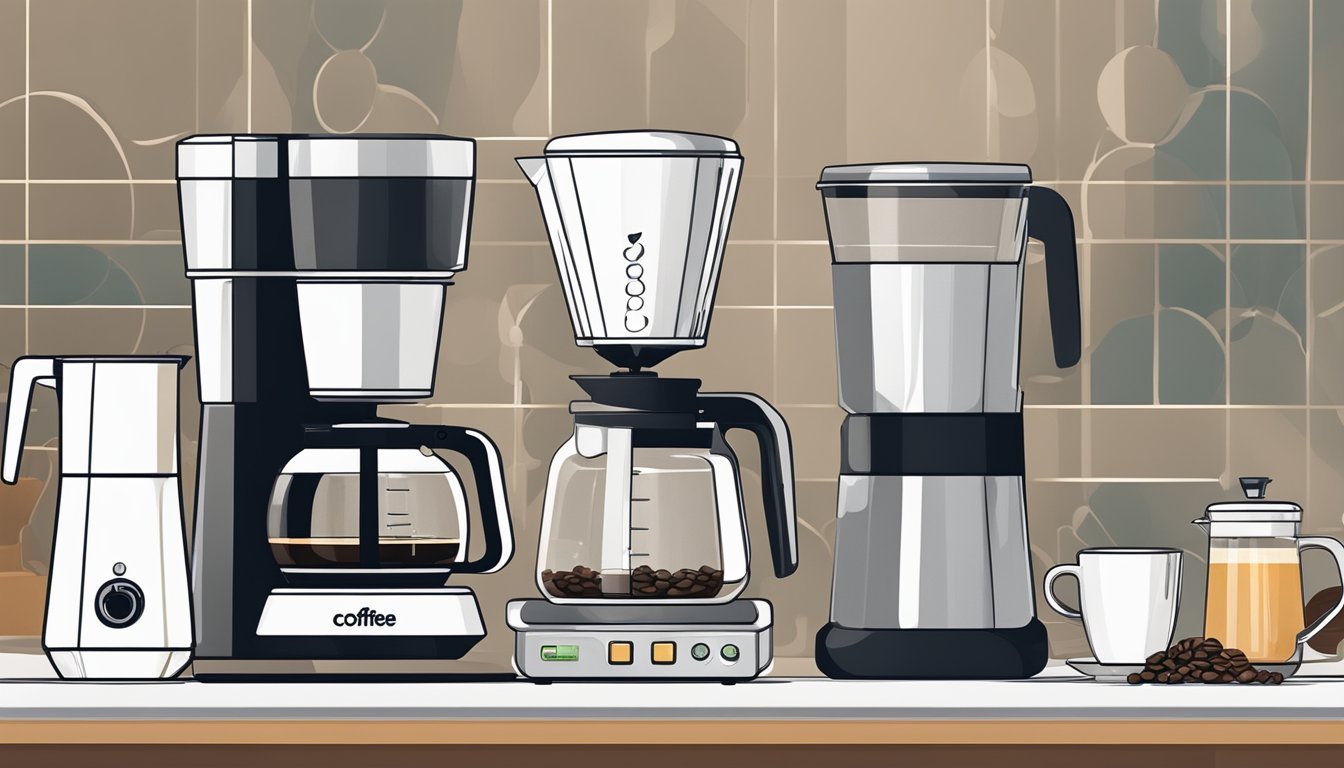How to Make the Perfect Cup of Coffee
Exploring Various Brewing Methods
Making a perfect cup of coffee is an art as much as it is a science, influenced heavily by the method chosen for brewing. Various brewing methods cater to different palates, textures, and coffee experiences. Whether it's the rich, full-bodied flavor from a French press or the smooth, strong essence offered by cold brew, each technique has nuances that can elevate the ordinary coffee ritual into a remarkable sensory journey.
Selecting the right coffee grounds and understanding the impact of water temperature are crucial steps in the process. For instance, a pour-over method requires a precise temperature, usually around 205 degrees Fahrenheit, to extract the flavors properly without scalding the coffee. On the other hand, cold brew, which involves an extended steeping period in cold or room temperature water, is forgiving in terms of temperature but demands patience and time for the flavors to fully develop.
Mastering these methods can unlock the potential of coffee, turning each cup into an exquisite masterpiece. To achieve the perfect balance, precision and attention to detail are key, whether measuring the right amount of coffee, timing the brew, or maintaining the ideal water temperature. Coffee aficionados and casual drinkers alike can appreciate the meticulous craftsmanship that goes into creating the ultimate coffee experience.
Understanding Coffee Basics
The foundation of a perfect cup of coffee revolves around selecting quality beans, achieving the correct grind size, using water at the optimal temperature, and maintaining the right coffee-to-water ratio. Understanding the science that underlies the brewing process is essential for consistently delivering a flavorful and aromatic cup of coffee.
The Role of Coffee Beans
Coffee beans are the seeds of the Coffea plant. Their origin, variety, and roast level significantly impact the flavor profile of the coffee. Freshly roasted beans are preferable as they preserve more essential oils and flavors. Whole bean coffee maintains its freshness longer than pre-ground coffee, necessitating a grinder for preparation.
The Importance of Grind Size
Grind size affects the extraction rate of flavors and compounds from the coffee during the brewing process. A coarser grind is suitable for methods like French press, where the water and coffee are in contact for a longer time. A medium-fine grind works best for pour-over techniques, balancing extraction and flow rate. Inconsistency in grind size can lead to an uneven extraction, making a burr grinder superior to a blade grinder for precision.
Water Quality and Temperature
Using clean, filtered water is crucial as impurities in water can adversely affect taste. The ideal water temperature for brewing is between 195°F to 205°F. Temperatures outside this range can either over-extract, leading to bitterness, or under-extract, causing acidity and a lack of depth in flavor.
Coffee-to-Water Ratio
The coffee-to-water ratio is a critical variable for controlling strength and balance in a cup of coffee. A common ratio is 1:16 (one part coffee to 16 parts water). Precision in measurement ensures consistency across brews, and a scale can be a valuable tool for accuracy.
The Science of Brewing
The brewing process involves the chemical extraction of flavors and compounds from coffee grounds. It is a balance of time, grind size, temperature, and agitation. The goal is to extract the desired flavors while avoiding undesirable components like excessive bitterness or sourness.
Freshness and Storage
For optimal taste, coffee should be consumed close to the roast date, and freshly ground coffee just before brewing yields the best results. Beans should be stored in an airtight container away from light, heat, and moisture to maintain their freshness.
Caffeine Content Analysis
Caffeine levels in coffee can vary widely based on bean variety and brewing method. A lighter roast may have slightly more caffeine than a darker roast due to less caffeine degradation during the roasting process. However, the difference is often negligible, influenced more substantially by the coffee's weight in its ground state, not volume.
Please remember, while the specifics above are important, taste is subjective, and experimenting with different beans, grinds, and brewing methods will help each individual find their perfect cup of coffee.
Brewing Method Overviews
Each coffee brewing method offers distinct flavors and characteristics, influenced by the brewing temperature, filtration technique, and equipment used to extract the coffee's rich essence.
Drip Coffee Brewing
Drip coffee, one of the most common methods, uses a drip coffee maker and paper filter to produce a clean and clear cup. The ideal brewing temperature ranges from 195°F to 205°F, allowing for a balanced extraction.
Espresso Essentials
Espresso is made with an espresso machine that utilizes high pressure to force water through finely ground coffee, yielding a concentrated shot with a creamy top layer known as crema. Precise control of temperature and pressure is vital.
French Press Fundamentals
The French press method involves steeping coarsely ground coffee in hot water, typically just below boiling, and then pressing it through a metal filter. This yields a full-bodied coffee with rich flavors.
Pour-Over Precision
Pour-over coffee requires a gooseneck kettle for controlled water flow, and devices such as the Chemex, Hario V60, or Kalita Wave for filtration. The method emphasizes an even extraction for a nuanced cup.
Aeropress Techniques
The Aeropress uses air pressure to push water through coffee grounds, allowing for a variety of techniques that can result in a clean, rich, and full-flavored cup, with shorter brew times compared to other methods.
Cold Brew Crafting
Cold brew coffee is made by steeping coarsely ground coffee in cold water for an extended period, often 12 hours or more. This results in a smooth, iced coffee with low acidity and a naturally sweet profile.
Moka Pot Mastery
A Moka pot is a stovetop device that brews coffee by passing boiling water pressurized by steam through ground coffee. This method produces a strong and rich coffee, somewhat similar to espresso.
Siphon Brewing Science
Siphon brewing requires a vacuum coffee maker and utilizes vapor pressure and vacuum to brew coffee. This technique is known for making a clean and delicate cup, showcasing subtle flavor notes.
Traditional Turkish Coffee
Turkish coffee is prepared by simmering very finely ground coffee with water and, optionally, sugar, to create a robust, foam-topped beverage. Serving with water on the side is traditional.
Alternative Brewing Gadgets
Innovative gadgets like the Clever Dripper and Vietnamese Phin offer unique twists on traditional methods. The Clever Dripper combines immersion and filtration, while the Phin is a gravity insert brewing method used to make Vietnamese-style coffee.
Advanced Brewing Techniques
In pursuit of the perfect cup of coffee, one must understand the intricacies involved in advanced brewing techniques. This exploration reveals the precision needed not only in the method but also in the mastery of variables that influence the distinct flavor and quality of the brew.
Mastering the Perfect Cup
A barista recognizes that the path to a perfect cup of coffee lies in achieving even extraction. They typically adjust the grind size to suit the brewing method, ensuring the coffee grounds are saturated uniformly during brewing. For instance, a fine grind reminiscent of table salt is ideal for techniques that require short brewing times, such as espresso, where water passes through the grounds quickly.
Exploring Specialty Coffee Makers
The best coffee machines for those who appreciate specialty brews are often manual or semi-automatic, allowing for greater control over the brewing variables. Siphon brewers, for example, combine theatricality with precision, using vacuum and pressure to brew. These methods provide an engaging experience and a clean cup, free from sediment, but require attentiveness and a nuanced understanding of the process.
Understanding Extraction and Filtration
Filtration plays a vital role in the clarity and flavor profile of the coffee. Baristas may choose paper filters for a clean cup with no sediment, or a special filter like a metal mesh for more oils and a fuller body. Soaking ground coffee evenly and gradually in water ensures that the vital compounds are extracted efficiently, without over-extraction that can result in bitterness.
Manipulating Brew Variables
Manipulating brew variables, such as water temperature, coffee-to-water ratio, and brewing time, allows for intricate customization of the end product. For example:
Temperature: 195°F to 205°F is ideal for optimal extraction without scalding the coffee.
Ratio: A general guideline is about 1½ cups of water per coffee cup.
Time: Varies by method, such as a quick 3 minutes for a drip brew or up to 24 hours for cold brew.
To achieve an even extraction, a barista must monitor and adjust these parameters as needed for the coffee's distinct flavor to shine through.
Serving and Enjoyment
Making the perfect coffee extends beyond the brewing process; it encompasses serving techniques, pairing with food for enhanced flavors, diligent maintenance of equipment, establishing a personal brewing routine, and appreciating worldwide coffee traditions.
Crafting the Presentation
The presentation of a coffee can greatly enhance its enjoyment. Selecting the appropriate glass design matters; a clear glass showcases the rich layers of a specialty brew, for instance. Artful latte presentations, with steamed milk poured to create a heart or leaf, demonstrate the barista's skill and add to the visual pleasure of a good cup.
Pairing Coffee with Food
Coffee's distinct flavor profiles can complement a range of foods. A light roast pairs well with sweet pastries, enhancing the flavors without overpowering. Darker roasts might go better with rich, full-flavored desserts such as chocolate cake, creating a balanced taste experience.
Maintenance and Cleaning of Equipment
Regular cleaning is essential for the flavor and longevity of coffee makers and grinders. After each use, one should dismantle the coffee grinder and brush out the grounds. It's also crucial to descale the automatic coffee machine periodically to ensure the best home brew and prolong the device's life.
Developing a Home Brew Routine
Establishing a home brew routine revolves around consistency and convenience. They should note the brewing time, grind size, water temperature, and ratios to replicate their preferred cup. Having a high-quality coffee maker or espresso machine and coffee grinder at home gives them control over the brewing process.
Coffee Traditions Around the World
Coffee traditions reflect the tradition and culture of different societies. In Italy, espresso is a way of life, with people often enjoying a quick, rich shot at the bar. A Turkish coffee, with its unfiltered, boiled preparation, offers a potent flavor experience shared across many Middle Eastern countries.
Conclusion
When crafting the perfect cup of coffee, attention to the art of brewing is essential. Each method, from pour-over to French press, encapsulates a unique set of steps tailoring the flavor and quality of the drink. The consumer's preference dictates the selection of beans, grind size, water temperature, and brewing time, all crucial for achieving the desired taste.
Pour-Over/Drip: For a clean and efficient extraction, they typically require 2 to 3 minutes for water to percolate through the grounds.
French Press: A coarser grind and longer contact time, about 4 minutes, brew a full-bodied cup.
Espresso: Demands a fine grind and a swift 20 to 30 seconds brewing time under high pressure.
Aeropress: Flexible in method, it can make coffee similar to espresso or longer brewed styles, within 1 to 2 minutes.
One should always consider water quality and temperature; filtered water heated to around 195°F to 205°F is ideal for extracting the coffee's full spectrum of flavors without imparting bitterness.
Lastly, consistency is key; precise measurements and technique refinement lead to reproducibility and mastery over the final cup. By marrying precision with personal taste, one unlocks the full potential of the coffee beans, turning a simple beverage into an exquisite experience.




